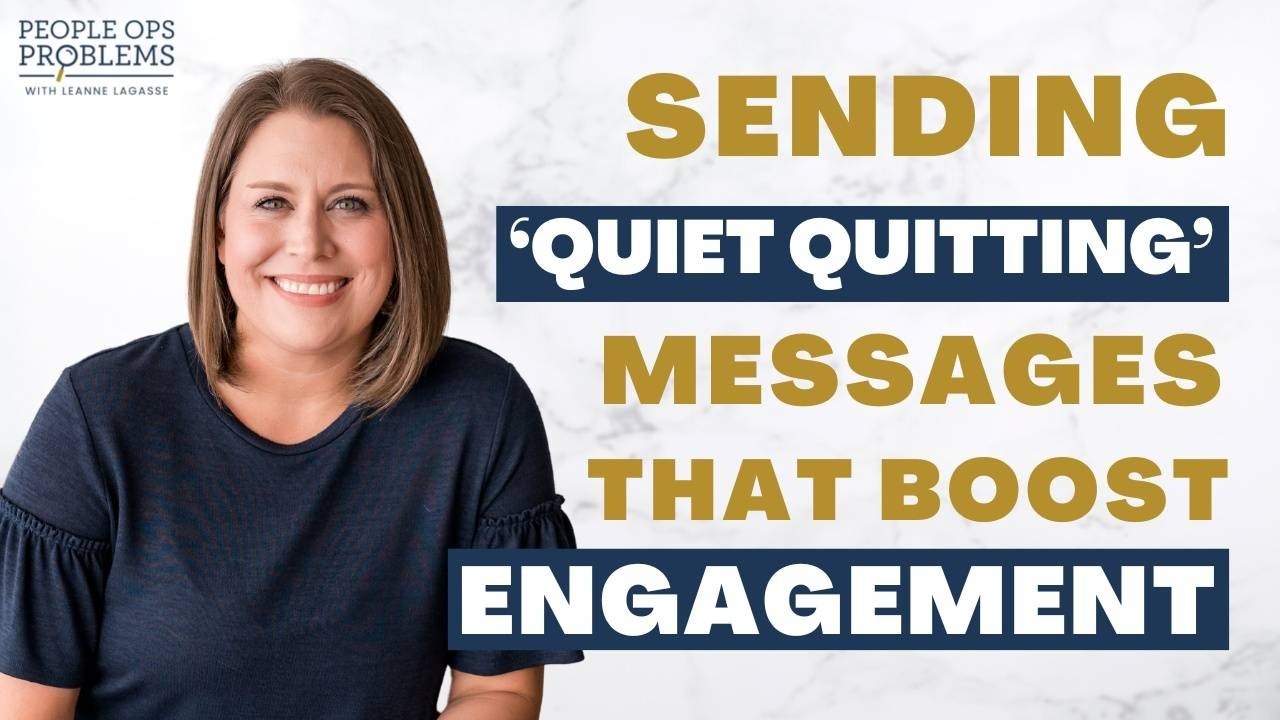3 Ways to Use ‘Quiet Quitting’ as an On-Ramp to Improve Communication With Your Employees

Welcome to People Ops Problems with LeAnne Lagasse, a bi-weekly newsletter designed to help HR and People/Culture Leaders improve employee engagement, retention, and communication with their employees. Sign up now to get it in your inbox.
There is A LOT of content out there right now trying to define and understand quiet quitting. And while there are a lot of questions we could be asking ourselves about what it is, or how to prevent it...
Those are not interesting questions to me.
Because long before ‘quiet quitting’ took corporate spaces by storm, People and Culture leaders have been working hard to prevent and solve the problems of employee disengagement, turnover, and decreased productivity.
A much more timely AND interesting question is...
👉🏻 "How can I use this ‘quiet quitting’ cultural moment to strengthen relationships with my team members?"
Keep reading to learn 3 things not to do right now AND 3 strategies you can use to communicate with your team members around this idea of quiet quitting.
Avoid Doing These 3 Things:
- Panic over it.
- Downplay it, or assume it’s not impacting your employees. Turnover contagion is real.
- Mock It or Bash It. Your employees are watching.
Instead, Here are 3 Communication Strategies You Can Use to Build Trust and Psychological Safety Around 'Quiet Quitting.'
-
Ask good questions to gather insights about how everyone is feeling:
- “What’s your perspective on all the ‘quiet quitting’ content out there right now?”
- “What do you think contributes most to employees feeling this way?”
- “How do you feel about your workload and your work/life integration?”
- “What do you need from me to experience better overall well-being?”
-
Send messages about the kind of leader and the kind of workplace you want to be for your employees:
- “It’s so important to me that you feel supported, cared for, and balanced in your role. Please let me know if we can do anything to grow in this area”
- “If you begin to feel overwhelmed or unappreciated, I’m here to help.”
-
Share your personal experiences:
- Tell your burnout stories at a 30,000-foot view. Share what you learned during those challenging seasons.
- Sharing your story builds empathy, trust, and psychological safety AND likely results in conversational reciprocity.
👉🏻 Here's also a free download to help facilitate more meaningful conversations with your teammates.
Click here to download your copy of the PDF called "25 Open-Ended Stay Interview Questions."
It's a great tool for checking in with your teammates and sending the message that you are invested in their journey through your organization. 💌
Hey, thanks for being here and for watching/reading. My goal is to consistently create content that's engaging, applicable, and inspires you to continue learning and growing as a leader. If you have ideas for future content, or any questions at all, please shoot me an email at: [email protected].
Get My Newsletter Delivered Right to Your Inbox!
Join thousands of People + Culture Leaders investing in their growth and development each week. 🙌🏻
No spam. No selling your info. Just great content.



